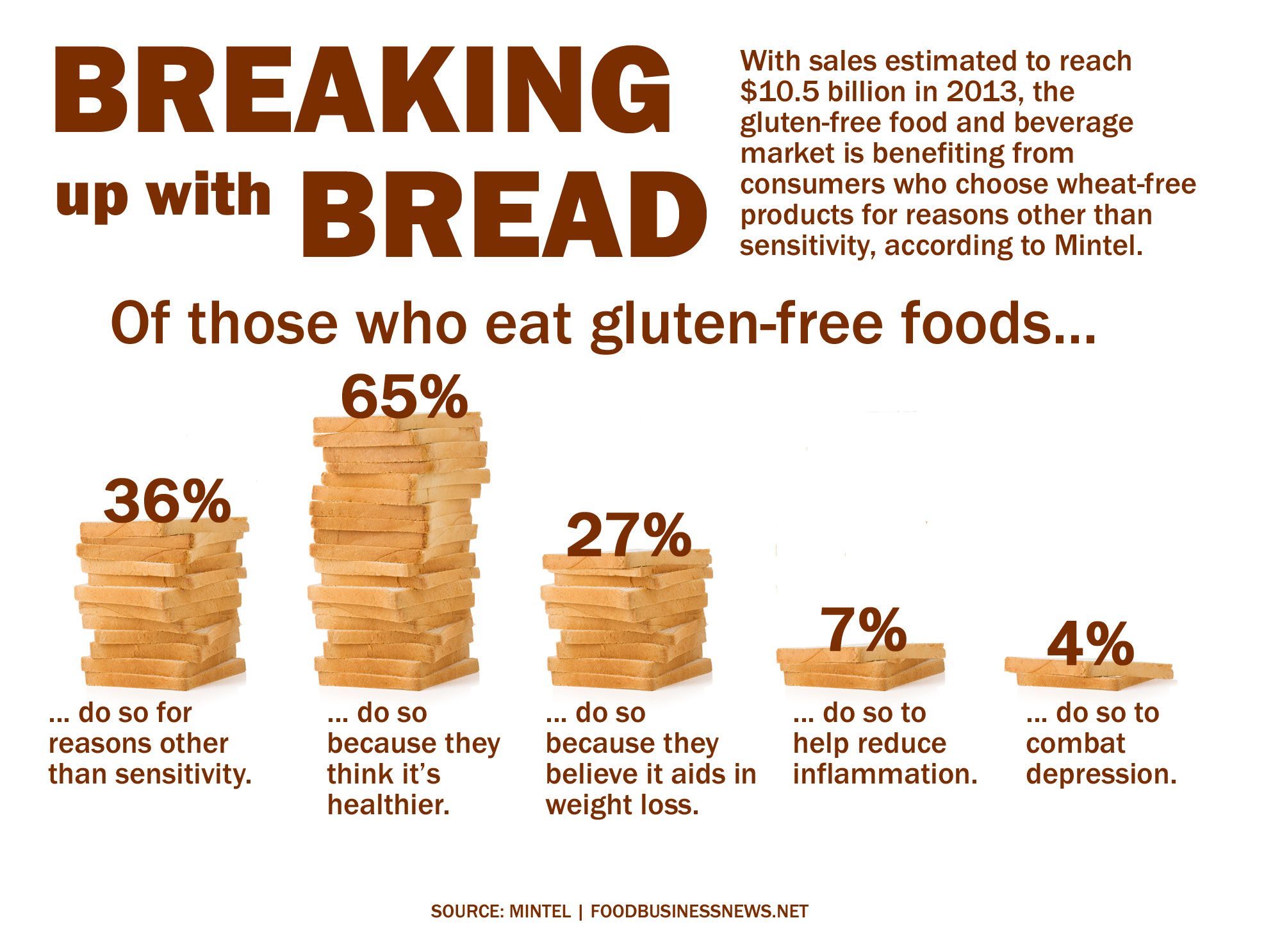~
Editor’s Note: This website is not designed to, and should not be construed to, provide medical advice, professional diagnosis, opinion or treatment to you or any other individual, and is not intended as a substitute for medical or professional care and treatment. For serious.
~
3 Ways Modern Wheat Makes Us Fat & Sick: Part 2
In my last blog, I described how even if you don’t have full-blown celiac disease, gluten contributes to inflammation and increases your risk for obesity and chronic disease. Yet wheat’s problems go beyond gluten.
Our bread is not what it used to be. It has become a Frankenfood: a by-product of industrial agriculture or “super-starch and super-gluten.” Combine that with the damage our guts have suffered from our diet, environment, lifestyle, and overuse of antibiotics, acid blockers, and anti-inflammatories, and you have the perfect storm for gluten intolerance, inflammation, obesity, and chronic disease.
Simply put, this is not wheat your great-grandmother used to bake her bread. FrankenWheat is a scientifically engineered food product developed in the last 50 years. This new modern wheat may look like wheat, but three crucial aspects differentiate it. Let’s briefly look at each of them.
Modern Wheat is a Super Starch
The Bible says, “Give us this day our daily bread.” Eating bread is nearly a religious commandment. Unfortunately, the Einkorn, heirloom, Biblical wheat of our ancestors is something modern humans never eat.
Instead, we eat dwarf wheat, the product of genetic manipulation and hybridization that created short, stubby, hardy, high-yielding wheat plants with much higher amounts of starch and gluten and many more chromosomes coding for all sorts of new odd proteins.
The man who engineered this won the Nobel Prize. With modern wheat, he promised to feed millions of starving around the world. Well, it has, and it has also made them fat and sick.
Unlike Biblical wheat, dwarf wheat contains very high levels of a super starch called amylopectin A. This is how we get big fluffy Wonder™ bread. Two slices of whole wheat bread now raise your blood sugar more than two tablespoons of table sugar, and one rodent study found amylopectin starch promotes the development of insulin resistance.
Whole wheat is no better than white flour. A Harvard report that measured the glycemic index and glycemic load of 100 foods found almost no difference between how Wonder™ bread and wheat bread raise your blood sugar. High-glycemic foods make people store belly fat, trigger hidden fires of inflammation in the body, and give you a fatty liver leading the whole cascade of obesity, pre-diabetes, and diabetes.
The biggest scam perpetrated on the unsuspecting public is the inclusion of “whole grains” in many processed foods full of sugar and wheat giving the food a virtuous glow. The best way to avoid foods that are bad for you is to stay away from foods with health claims on the label. They are usually hiding something bad.
Modern Wheat Contains Super Gluten
Modern dwarf FrankenWheat also contains super gluten, which is much more likely to create inflammation in the body. As I discussed in my last blog, gluten creates a host of inflammatory and chronic diseases as well as obesity and diabetes.
The old 14 chromosome-containing Einkorn wheat codes for the small number of gluten proteins, and those it produces are the least likely to trigger celiac disease and inflammation. In contrast, the new dwarf wheat contains 28 (twice as many) chromosomes and produces a large variety of gluten proteins, including the ones most likely to cause celiac disease.
Modern Wheat Contains a Super Drug
Modern wheat also contains a super drug that makes you crazy, hungry, and addicted. Let me explain.
Digestion converts proteins in wheat into polypeptides, also known as exorphins. Similar to the endorphins you get from a runner’s high, these exorphins bind to opioid receptors in the brain, making you high and addicted just like a heroin addict.
These wheat polypeptides, called gluteomorphins, are absorbed into the bloodstream and cross the blood-brain barrier. Morphine-like opoids can cause multiple problems including schizophrenia and autism. But they also create cravings, bingeing, and other addictive behavior. No one binges on broccoli, but they binge on cookies or cake.
Even more alarming is that you can block these food cravings and addictive eating behaviors and reduce calorie intake by giving the same drug we use in the emergency room to block heroin or morphine in an overdose called naloxone. Binge eaters ate nearly 30% less food when given this drug.
The Elimination Diet
While testing can help identify gluten sensitivity, the only way you will know if this is really a problem for you is to eliminate all gluten (including wheat) for two to four weeks and see how you feel. Get rid of the following foods:
- Gluten (barley, rye, oats, spelt, kamut, wheat, triticale—see www.celiac.com for a complete list of foods that contain gluten, as well as often surprising and hidden sources of gluten.)
- Hidden gluten sources (soup mixes, salad dressings, sauces, as well as lipstick, certain vitamins, medications, stamps and envelopes you have to lick, and even Play-Doh.)
For this test to work you must eliminate 100 percent of the gluten from your diet. No exceptions, no hidden gluten, and not a single crumb of bread.
Then eat it again and see what happens. If you feel bad at all, you need to stay off gluten permanently. This will teach you better than any test about the impact gluten has in your body.
So now you see: that piece of bread may not be so wholesome after all! Simply eliminating this insidious substance from your diet may help you achieve lifelong vibrant health.
What foods or non-food substances were you shocked to learn contained gluten? Share yours below or on my Facebook page.
~
References
Byrnes SE, Miller JC, Denyer GS. Amylopectin starch promotes the development of insulin resistance in rats. J Nutr. 1995 Jun;125(6):1430-7.
Nicole M. Avena, Pedro Rada, and Bartley G. Hoebel. Evidence for sugar addiction: Behavioral and neurochemical effects of intermittent, excessive sugar intake. Neurosci Biobehav Rev. 2008;32(1):20-39.
“New Releases.” Glycemic Index and Glycemic Load for 100+ Foods. N.p., n.d. Web. 10 Dec. 2014.
~
Love elephant and want to go steady?
Sign up for our (curated) daily and weekly newsletters!
Editor: Rachel Nussbaum
Photo: foodbusinessnews.net












Read 2 comments and reply